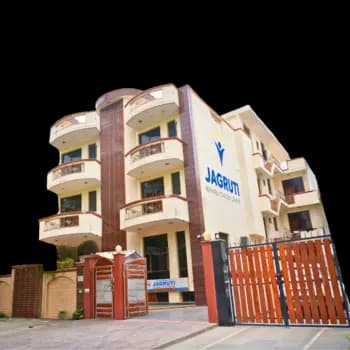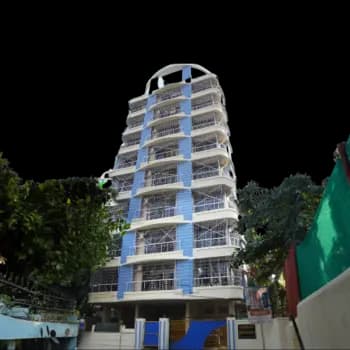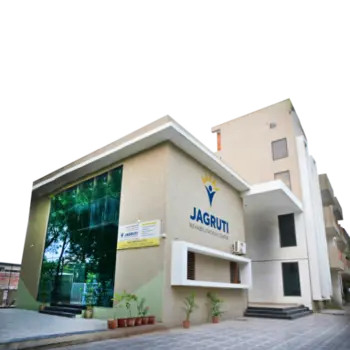Pica
Pica disorder is a psychological disorder in which a patient compulsively consumes non-consumable items when exposed to certain kinds of triggers. This can prove to be dangerous if the patient consumes toxic material that has the potential to harm the internal organs of a human being. Categorised under compulsive disorders and eating disorders, pica disorder can be life-threatening if left unchecked or undiagnosed.
Read on to learn more about what Pica is, what Pica disorder symptoms are, what various Pica treatment options are available, and what the symptoms of Pica are, among other factors.
What is Pica?
Pica is an eating disorder where patients compulsively consume non-food items. At certain times, the disorder is harmless and expected, especially when the symptoms are exhibited by young children. However, it can be dangerous if a patient ingests toxic or poisonous substances.
Common Myths and Misconceptions
Myth 1: People often outgrow pica naturally.
Fact 1: Young children do put everything in their mouths. However, medical attention must be given if the behaviour continues after a certain age.
Myth 2: Patients diagnosed with pica stop eating consumable food items.
Fact 2: False. Pica is a compulsive disorder in which a patient cannot control the urge to eat non-consumable items.
Myth 3: Pica is caused by poor parental supervision.
Fact 3: False. Pica affects a person because of various genetic and environmental factors. It is a psychological problem like any other disease.
Statistics and Facts
Pica disorder was officially recognised as a psychological disorder in 2013. Therefore, there is limited data available to clarify how common Pica disorder is. However, certain studies suggest that 1.1% of the adult population and 5% of the youth aged between 7-14 exhibit symptoms worldwide. The prevalence is higher in developing countries owing to food insecurity and malnutrition.
How common is pica?
Defining the commonality of disorder among people can be challenging owing to the flexibility of definition. Moreover, healthcare providers may overlook the condition of the patient, or the parents do not report symptoms at the right time. Since infants and going children often put their hands into their mouths, such behaviour is hard to differentiate from pica.
Types of Pica Disorder
Here are 4 main types of pica disorder:
- Geophagia
Patients diagnosed with geophagia consume soil, earth, dirt, and other such non-consumable substances. - Pagophagia
People diagnosed with pagophagia compulsively consume cold beverages, ice, or even freezer frost. They are usually those patients who have an iron deficiency or are severely anaemic. - Amylophagia
Patients diagnosed with amylophagia crave starchy food like raw pasta, raw rice, cornflour, and even laundry starch. - Xylophagia
Patients with xylophagia have a compulsive urge to eat wood, paper, or any other wooden product.
What Causes Pica Disorder?
- Stress
Stress and anxiety trigger hunger, which can make people compulsively consume inedible food items. Patients are not varied in their actions and may end up consuming toxic substances. - Negative Childhood Conditions
Pica, according to certain studies, usually affects young kids who grow up in poverty-stricken households. PICS disorder is also a coping mechanism for certain kids suffering from neglect or abuse. Attention-seeking kids also resort to the consumption of non-consumable foods. - Genetic Factors
Such conditions may also arise spontaneously. For instance, a child could develop the condition in the womb. Pica disorder can also be because of certain genetic disorders inherited from the patients. - Nutritional Deficiencies
Certain nutritional deficiencies, like iron, calcium, and zinc, can make a person feel hungry and low on energy. People with mineral deficiencies exhibit such behaviour as mineral deficiency can affect the functioning of the brain.
What Are The Various Pica Disorder Symptoms?
Here are some of the most common pica symptoms:
- Behavioural Symptoms
Persistent craving for non-consumable substances and a strong compulsion to eat these items are exhibited by patients suffering from Pica disorder. This behaviour is repeated often even by grown-up individuals who do not pay heed to nutritional value. Mostly, the behaviour is driven by curiosity rather than compulsion. - Psychological Symptoms
Patients suffering from pica disorder often suffer from stress and anxiety. Those under emotional stress often exhibit this behaviour to cope with embarrassment, shame, and social stigma. Certain times, these symptoms also co-occur with other disorders like OCD, autism, etc. - Physical Symptoms
Since patients can consume any and every substance, they often end up damaging their oral health and digestive system. Toxicity in blood, allergic reactions, and chipped teeth are some of the most common symptoms and signs of degradation of health.
How is Pica Treated?
Pica disorder treatment is a two-fold process that includes diagnosis before the treatment process starts.
Diagnosis
Diagnosis includes a thorough interview with the patient to learn about the behaviour and the triggers. Blood tests can also be recommended by physicians to know if a person is suffering from zinc or iron deficiency. However, complete honesty must be maintained by patients.
Pica Treatment
- Mild Aversive Therapy
Mild aversive therapy is a behaviour intervention method that discourages harmful actions like the consumption of non-food items. The process includes applying a gentle but unpleasant stimulus after the patient exhibits the undesired behaviour. For instance, a therapist might spray a bitter mouth freshener after the patient consumes something non-consumable. The purpose is to associate negative consequences so that a patient feels discouraged when he or she craves something inedible. - Behavioural Therapy
Behavioural therapy aims at identifying and modifying triggers. Therapists use techniques like functional analysis to determine why patients consume non-consumable foods. They determine triggers like sensory stimulation, attention-seeking, stress, or if it is a coping mechanism. By administering this therapy, professionals determine the root cause of the problem and create a supportive environment. - Differential Reinforcement Therapy
This therapy involves rewarding appropriate behaviours, ignoring and fighting triggers, and redirecting actions. For instance, carers reward patients when they fight the urge to eat anything that is non-consumable. Over time, patients learn to focus on acceptable behaviours to see positive outcomes. Consistent monitoring and structured routines prevent relapse and ensure long-term recovery. - Medication
Medication is prescribed to those who are diagnosed with deficiencies like zinc or iron. Therefore, medical professionals prescribe drugs according to the symptoms. Selective serotonin reuptake inhibitors are effective for people who feel depressed and anxious. However, since it is a psychological disorder, there are no particular medicines manufactured for the disorder.
Living with Pica Disorder
- Feeling Ashamed and Embarrassed
Pica disorder is accompanied by a patient feeling embarrassed and ashamed. For some patients, underlying disorders like OCD or autism are also a problem that needs treatment. Therefore, a patient must ignore feelings of shamefulness and embarrassment and focus on recovery. - Seek Professional Help
Professional help is essential for a proper and timely diagnosis of the problem. It will help in identifying any underlying psychological problems or nutritional deficiencies and address any other external factor that could be a cause. - Address Deficiencies
Maintaining a balanced diet and having three proper meals a day is essential for a patient to recover. Including required supplements in the diet will ensure that your system receives the required amount of minerals and vitamins. - Build a Support Network
Build a support system that includes family and friends who know everything about your problem. Make sure they are your closest and mean well to you. Keep them posted about your treatment and recovery for additional support. Avoid seeking help from social media influencers or self-proclaimed mental health experts. - Coping Strategies
Develop hobbies and create a sustainable routine that complements Pica treatment. Select Pica symptoms and treat every symptom individually for better mindfulness. Acceptance and awareness of a disorder are essential for a treatment to be effective.
How to Support Loved Ones?
- Educate Yourself About the Disorder
People living with and around a patient must educate themselves about the disorder. Once the Pica disorder symptoms are identified and treated, loved ones must support the patient to seek professional help and not think about the taboo. - Avoid Judgement
Judgement must be avoided at all costs, as it is like any physical problem that can be treated by medical intervention. Make sure they do not lose their temper and are privy to the treatment. Forcing a patient into any kind of treatment can worsen a problem. Therefore, analyse the behaviour of the patient before offering a solution. - Offer Help and Give Advice When Needed
People who live with the patient must offer help and give suggestions when the patient has accepted the problem. However, make sure that the suggestions come after careful deliberation. Abstain from suggestions gathered from social media and other unreliable sources, as they can confuse the patient. - Monitor the Patient
Keep an eye on the patient without prying on him or her. This can lead to intentional behavioural changes that can worsen the symptoms. Therefore, stay with the patient at all times but respect their privacy so that they do not get self-conscious about their condition. - Encourage Professional Help
Inculcate the idea of seeking help from professionals without worrying about judgment. Counsel them to feel comfortable sharing their issues as they would do with any other disorder or condition. With advancements in technology, online therapy sessions are possible, which will make them comfortable in case they are hesitant to go to a facility.
Jagruti Treatment and Recovery
- Tailored Treatment
Mental health experts at Jagruti Rehab Centre frame customised treatment plans. Every patient is looked at independently, and the symptoms are analysed. No two patients with the same psychological disorder are similar. Every patient is unique, as they have their circumstances, and responses to the disorder vary, so the therapy is administered accordingly. Customised treatment plans and diets ensure long-term recovery. - Professional and Experienced Staff
Experienced mental health experts and professional nursing staff ensure that the patients get the best possible treatment. Prescribing medicines, timely counselling sessions, and regular therapy classes are available for online and offline patients. For those who are studying or working, e-therapy is a convenient alternative. - Hygienic Conditions
The rehabilitation centre is clean, and the housekeeping staff is available at all times. Certain patients who are not able to perform basic activities like bathing and changing are helped to do so. Rooms and washrooms are cleaned daily, recreational areas are maintained at all times, and patients are offered the best facilities. - Relapse Prevention Treatment
Relapse prevention is an important part of the treatment. Families are counselled about the disorder and the treatment. Online and offline sessions by therapists help in keeping a tab on the habits. There are family sessions and group sessions for everyone to explain the exact nature of the disorder and more. - Provision of Balanced Meals
A well-balanced and healthy diet is an essential part of the treatment. Nutritionists on the plan that aligns with cultural and religious considerations and is rich in minerals that the patient lacks. This diet also supports medication, therapies, and counselling sessions.







